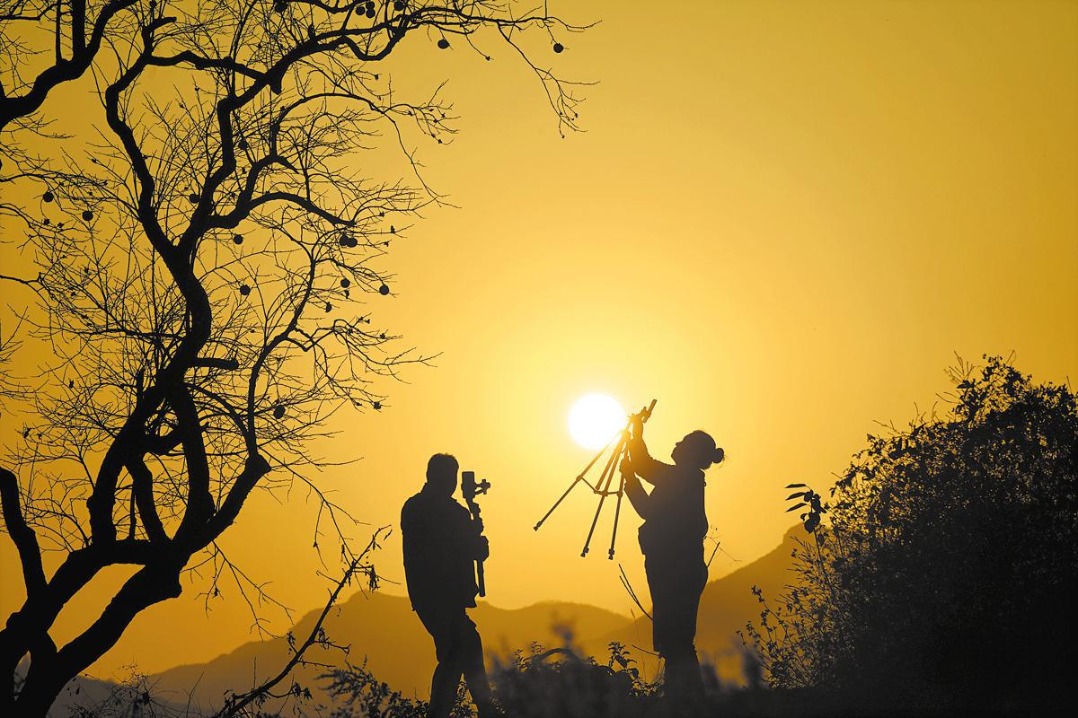Endangered animals thrive in Tibet canyon

Coexistence of carnivores suggests good biodiversity in region, researcher says
Eight endangered wild animals under top State protection have been caught on camera in the Tibet autonomous region's Yarlung Zangbo Grand Canyon-the deepest canyon in the world-according to recently released research.
Cameras placed in the canyon captured images of Bhutan takin, clouded leopards, large Indian civets, golden cats, jackals, Himalayan serow, Impeyan pheasants and red gorals.
Supported by the National Forestry and Grassland Administration, the research on the region's biodiversity aims to collect information that will help in the design of a long-term protection plan.
The research project, being conducted by two wildlife protection NGOs-the Shan Shui Conservation Center and Xizijiang Conservation Center-began in October and is still running.
As of last month, 32 mammals and 30 birds had been recorded, said Ren Zhaoxiang, project director from the Shan Shui Conservation Center.
Clouded leopards were recorded 26 times, he said, while golden cats were recorded 52 times, with at least five subspecies recognized by their different colors.
Jackals were also captured on camera 52 times, with most of the recordings involving pack activities.
Li Cheng, project manager from the Xizijiang Conservation Center, said: "In many areas, we've noticed the coexistence of several high-class carnivores. This reflected the region's good biodiversity, which supports sufficient numbers of ungulate mammals.
"The ungulate mammals ensure a food supply for high-end carnivores, which then see their population grow steadily."
The canyon in southern Tibet is three times as deep as the Grand Canyon in the United States and is one of the world's biodiversity hot spots.
With altitudes ranging from 500 meters to 7,782 meters, the canyon has an average depth of 2,268 meters, with the deepest place over 6,000 meters, according to a national geomatics center survey in 1999. The region harbors nearly all vegetation forms from the tropical to the cold zone.
It is also home to more than half of the mammals, 80 percent of the insects, and 60 percent of the fungi on the Qinghai-Tibet Plateau-known as the roof of the world and a key gene pool for global biodiversity.
The canyon region is also the only confirmed habitat of the Bengal tiger in China.
"We hope the research will provide scientific support to the region's biodiversity and guide related departments to make local community-centered action plans," Li said." It is also expected to be a pilot project on the country's biodiversity."
Last week, Tibet announced the results of its second land-based wildlife resource survey, which took eight years to complete.
A total of 1,072 terrestrial vertebrate species were identified in the region, compared with just 701 eight years ago.
The survey also discovered five new species: three frog species in different areas of Tibet, the white-cheeked macaque and a viper species.
More than 900 people participated in the survey, drawing data from 260 survey sample areas.
The survey aimed to establish the current situation of terrestrial wildlife resources in the region, build archives and databases on wildlife resources, and establish a monitoring network for wildlife resources in Tibet.
Over the past five years, Tibet has strengthened biodiversity protection, carried out key ecological protection and restoration projects and worked to enhance ecological security.
Palden Nyima contributed to this story.
- New Year holiday sees 595 million cross-regional trips
- DPP's proposal to revise regulations on cross-Strait relations condemned
- 2025 was China's warmest year on record since 1961
- Former top anti-corruption official expelled from CPC
- Former China Eastern Airlines chairman expelled from CPC
- Former senior Hubei official expelled, illicit gains confiscated



































